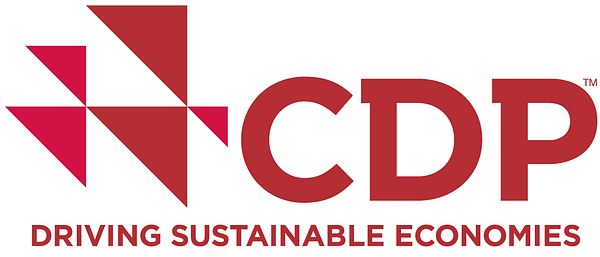Pressmeddelande -
STEEL COMPANIES NEED TECH TRANSFORMATION AS WORLD GETS TOUGH ON EMISSIONS
- Steel industry accounts for 7% of global emissions and has made no progress to reduce emissions in a decade[1];
- Industry needs a technological transformation that will reduce its emissions per tonne of steel produced over 70% by 2050 in order to meet Paris Agreement objectives[2];
- 70% of steel industry will face a price on carbon by end of 2017, increasing risks for steelmakers that do not reduce their emissions;
- POSCO, SSAB and Hyundai Steel are best performing companies on carbon-related metrics; Tata Steel and US Steel rank lowest of companies we were able to assess;
- China produces 50% of steel globally and will become subject to a carbon price in 2017, but of the 15 largest Chinese steelmakers, representing 40% of China’s steel produced, only one publicly discloses its greenhouse gas emissions.
October 6, 2016: A new report, analyzing a US$121bn[3] grouping of the world’s largest steel companies, has found the industry needs to reduce its emissions by over 70% by 2050 in order to meet Paris Agreement objectives, but that progress on research and development (R&D) in emerging decarbonization technologies is limited and at early stages. With low industry profitability, R&D expenses have been cut by 14% in US$ terms in recent years and there are no commercially available technologies today which can achieve these targets. The threat to the industry is urgent as over 70% of world steel production will be subject to a carbon price by the end of 2017.
The report fromCDP – voted no. 1 climate change research provider by institutional investorsand winner of Investment Week’s Best SRI Research 2016 – reveals that there has been no industry-wide progress in improving emissions and energy efficiency levels in a decade with all emissions reduction targets set to expire by 2020. The steel industry is responsible for 6-7% of global emissions, yet the report finds that of the 14 global steel companies analyzed, over 40% (six) have not published any emissions reduction targets beyond 2016.
Drew Fryer, Senior Analyst, Investor Research at CDP said:
“The steel industry will have to play a huge part in achieving the 2-degree scenario laid out in the Paris Agreement. However, there has been no progress in reducing its emissions over the past decade. Steelmakers need to prioritize funding of a technology transformation to reduce emissions in order to ensure targets are met. In particular, progress has been too slow to realize the potential of carbon capture and storage (CCS), with no pilot projects underway in the steel industry.”
Today’s report benchmarks leading steel companies on their management of climate issues finding South Korean firms POSCO and Hyundai Steel among the best performing, with Tata Steel and US Steel ranking lowest among those who disclose.
Other findings from the report include:
- Over 70% of world steel production will be subject to a carbon price by end 2017, including from emissions trading schemes, carbon taxes or climate-focused coal taxes. Without success in realizing the potential of breakthrough low emissions technologies, steelmakers could face a continuously rising burden of carbon permit obligations;
- The industry’s progress in reducing emissions is inconsistent. More companies increased their emissions intensities than reduced them in the past seven years, with no industry-wide progress to improve energy efficiency in a decade;
- Only eight companies in the report have outlined emissions reduction targets. All those will expire by 2020. Six out of 14 companies in our sample have not published any forward looking targets, or have targets that expire in 2016;
- By 2030, 20% of sites assessed are projected be in water high risk areas and 8% in extremely high risk areas[4] This could cause future business interruption exacerbated by climate change;
- China makes up 50% of global steelmaking production but is not providing investors with the carbon-related disclosures they require to assess individual company risk and preparedness, and make informed investment decisions;
- The steel industry is generally supportive of carbon regulation but has obstructed it in practice, arguing it could create inconsistencies between regions with and without carbon prices. However, debate between industry and regulators over ‘carbon leakage’ could enter a new phase as more countries introduce carbon prices including China;
- Wuhan Iron and Steel, Nucor Corporation, Novolipetsk Steel OJSC, Steel Authority of India, Inner Mongolian Baotou Steel Union and SeverStal PAO which collectively represent over US$60 billion in market capitalization, did not respond to CDP’s 2016 climate change questionnaire and are therefore not included in this report. Investors should ask these companies why they are not providing transparency on their carbon emissions.
You can view the executive summary of the report, including a league table, in here.
[1]Based on figures reported by the World Steel Association
[2] The sectoral decarbonization approach (SDA) suggests the need for an emissions intensity reduction of over 70% by the steel industry by 2050 to achieve 2 degrees
[3]Based on 2015 average market cap
[4]According to our analysis using WRI Aqueduct
Ämnen
- Företagsinformation
Regioner
- Stockholm
Carbon Disclosure Project, CDP, är ett samarbete mellan 827 institutionella investerare. CDP genomför världens största kartläggning av storföretagens ambitioner i klimat- och vattenfrågor, och att minska skövlingen av tropisk skog. Ett nordiskt sekretariat för CDP bildades år 2006 med säte i Stockholm. I år 2016 utfrågas över 250 nordiska företag om deras klimatpåverkan.
